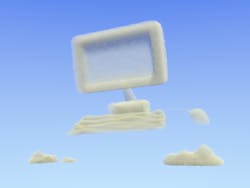In the navy, when a ship can no longer provide the muscle and protection the country needs, it is broken up and sold for scrap. In the software world, when software can no longer meet the needs of its developer, it is “no longer supported.” On April 8th of this year Microsoft announced it would no longer support Windows XP.
“Microsoft provided support for Windows XP for the past 12 years,” Microsoft states on its website. “But the time came for us, along with our hardware and software partners, to invest our resources toward supporting more recent technologies so that we can continue to deliver great new experiences.” As a result of XP’s death, Microsoft will not provide updates, which typically provide security improvements against the growing tide of malevolent hackers.
Microsoft’s actions also set the course for a great number of software developers who build applications for the Windows operating system. They are unwitting groupies who have no choice but to follow Microsoft from one venue to the next. Windows-based dental software developers belong to this category and many gave notice to their customers that they would no longer support their products on Windows XP.
With this lack of support many doctors are now faced with the unplanned investment of upgrading to a newer version of Windows, like 7 or 8. And the amount is not small, with estimates as high as $25,000.
What the Inheritance Includes
Without continued support from Microsoft, Windows XP is pretty much left to the wolves. “There are two main threats,” explains Dr. Lorne Lavine, founder and president of The Digital Dentist, a company that provides technology support and solutions. “First and foremost, since Microsoft has stopped updates and security patches for XP, any computers running XP are at a much higher risk for malware such as viruses and spyware. Closer to home, the other threat is being non-compliant with HIPAA rules. HIPAA requires that you do a formal risk assessment every year and correct the issues that you discover. A practice doing a risk assessment would determine that their XP computers are not compliant. With the Omnibus rules making it very easy for an individual to report a practice for violations, the dentist risks being audited and having to pay fines from $50,000 to $1.5 million.”
The security risks associated with XP seem to have already materialized. “Hackers have uncovered the first bug that could put Windows XP users at serious risk,” writes PCWorld’s Ian Paul. This new bug, that specifically targets XP, was identified by Microsoft as early as April 26, 2014, less than three weeks after the company put XP under.
To correct the problem, doctors with XP computers must upgrade to a newer version of Windows. The cost of upgrading depends on the number of computers that need the upgrade, of course. But the cost is multiplied if the computers themselves need to be upgraded. A good number of XP computers are outdated and probably unable to run Windows 7 or 8. Thus, a simple OS upgrade turns into a major overhaul of all the hardware in the practice. Tack on the services of an IT pro to install and configure the hardware and the bill continues to grow.
According to Justin Shafer, President of OnSite Dental Systems, an IT pro based in Texas, “If the office decides to simply upgrade Windows while keeping their current hardware, then the IT expense is higher. The time required to install a new version of Windows, other software, and configuration can often total up to four hours per computer, more for a server.”
Bryan Currier, President of mid-west based Advantage Technologies, tells his clients that the silver lining to the death of XP is a better OS. “Whether replacing hardware or not, the speed, stability, and security offered by Windows 7 is a great advancement over XP. Practices will see real advantages to making this upgrade in terms of efficiency and ease of use, along with taking a practical step to keep PHI properly secured.”
It’s Not Just about the Hardware
If your practice is faced with a significant investment in new hardware and IT services it’s hard not to see the forest for the trees. But, seeing the forest is the only way you’ll see the silver lining. Sometimes it takes a major disruption to the status quo for a practice to take a step back and leverage the disruption to leapfrog forward.
“For many practices, this upgrade cycle marks a good time to do an overall review of your technology systems,” says Currier. “In many cases, it makes sense to move parts of your technology system to the cloud to increase overall efficiency and possibly lower costs. Each practice is unique, and using the cloud will look differently for each one.”
Jeff Cook, a dental software consultant with Curve Dental, argues that “at the end of the day an investment in new hardware only goes as far as getting the practice back to the point at which it was before XP died. If the practice is still using outdated management software the practice isn’t maximizing their investment. A big picture approach says ‘if my computers are outdated, surely my software is, too.’”
Technology standards change rapidly. Windows XP was introduced more than 12 years ago. In technology years that’s several life times! Client-server software, the type that comes on a CD and must be physically installed onto a computer, is much older than Windows XP (in technology years it’s almost Jurassic!).
The current technology platform is the cloud. Today, whenever you flip open a laptop or tablet you’re working on the cloud. Most of the computing you do is cloud-based: Socializing, communicating, banking, traveling, researching; we are cloud computing every day and quite comfortable with it.
If your management software is not on the cloud it is outdated. That’s not to say it doesn’t work. Windows XP was a tried and tested operating system. It was put down because a new operating system is more efficient and provides a more flexible platform. The same can be said for older client-server management software.
Today, a handful of cloud-based management systems are available to replace the older systems. My company, Curve Dental, is one of them. We've aimed to position ourselves as a leader in the XP to cloud transition, and in doing so we've been preparing for this for quite some time. In our work we've discovered that although the XP problem is similar across various practices, each practice is different and requires its own unique approach to the problem.
How to Avoid the Pitfalls of another Death in the Windows Family
The next version of the Windows OS family to die is Windows Vista. On April 11, 2017 Microsoft will discontinue support of that version of its popular OS. Your practice can avoid a significant investment in computer technology by budgeting for annual maintenance.
Begin by speaking with your IT pro. Most IT pros recommend that you replace every computer in your practice every three to four years. They can help you identify the oldest computers in your practice. You can then budget to replace as many as you can afford every year. Your accountant may also show you tax advantages for replacing your hardware regularly and amortizing the cost over its useful life. The advantage to this plan is that you are spending a little every year on technology rather than one big chunk.
With regard to your management software, moving your practice to the cloud may provide immediate benefits. First, the software is always up to date. You won’t hassle with upgrades and a data backup is an inherent part of the solution. Better HIPAA compliance may also be an advantage.
For many practices, a cloud-based management system also provides a better value. Because the software is constantly being enhanced you’ll see new features and improvements all the time, as opposed to traditional software where you may see an upgrade once or twice a year. Whenever you log into the system you’ll have access to the latest features to help you stay efficient.
The death of XP has already caused many doctors to reach for their pocketbook. When the practice takes a broader view of the dilemma, looking beyond just the hardware, the practice may be able to add value to the dollars they already plan to spend.
Andy Jensen is a 20-year veteran in the dental software market. He is currently the CMO for Curve Dental, a developer of cloud-based practice management software.You can contact Andy at [email protected].








